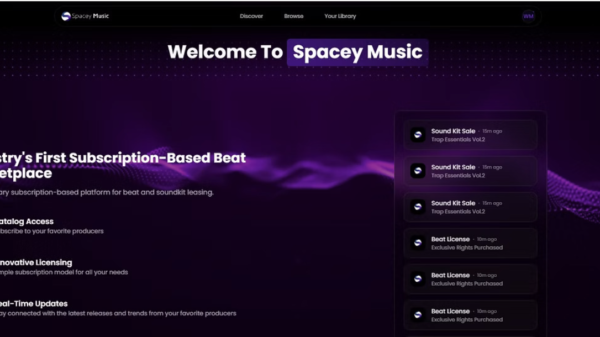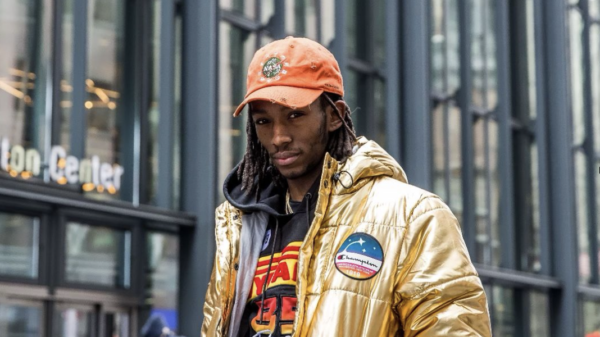In the spring of 1997, Deadheads tuning into The Grateful Dead Hour, the nationally syndicated radio show, heard a rare if disconcerting treat. Over two installments, host and Dead historian David Gans played the complete tape of Jerry Garcia’s last show with the band from two years before, at Chicago’s Soldier Field stadium. “I found it difficult to listen to,” Gans admits of that tape, “but there’s historical value in the final performance.”
However, in terms of any official unveiling, it’s never been heard since.
This year, the 60th anniversary of the launch of the Dead has been commemorated with a new box set of unreleased concerts, three celebratory Dead & Co. shows at San Francisco’s Golden Gate Park, more releases in the vital Dave’s Picks series overseen by dedicated archivist David Lemieux, and bongs, e-bikes, paddle boards, and beach towels blanketed with the band’s logo.
Yet when it comes to authorized, band-approved products, the recording of Garcia’s last show with the Dead remains tucked into the vaults. Audience tapes and video of the July 9, 1995, concert have long been available online and continue to circulate, particularly on the Internet Archive. As one commentator on the site wrote, “While it may not be as enjoyable as older concerts from the Seventies, it’s a must listen if you’re a fan of the Grateful Dead.”
But 30 years later, the recording has still not been given an actual, cleaned-up release by the Dead organization or Rhino Records, which handles the Dead’s catalog, and there appears to be no immediate plans to do so. In an indication of how the show’s recording remains a sensitive topic, those closely connected to the Dead’s legacy — including band members and Garcia’s family — declined to comment to Rolling Stone.
Rock history is strewn with valuable artifacts that the artists themselves have decided to keep locked away. Led Zeppelin were so disappointed with their reunion at 1985’s Live Aid, even with Phil Collins filling in on drums, that the performance has never been rebroadcast. This summer’s four-part doc on the benefit concerts doesn’t include even a snippet of it. The Rolling Stones’ 1969 set at Altamont was recorded by the Grateful Dead’s pro sound crew but has remained in their vaults, as has Crosby, Stills, Nash & Young’s 1974 show at Wembley Arena in London (filmed for a planned TV special), where, even by their own admission, they were pretty wasted on the way to another breakup.
Editor’s picks
What would be Garcia’s last show with the Dead (he died a month later) is an equally important historic document — and is equally fraught. As Deadheads and pretty much everyone in the world of the Dead agrees, 1995 wasn’t a banner year for the band. Even before the two nights at Soldier Field that wrapped up their summer tour, the trek had been dogged with problems, from gatecrashers and a death threat in Indiana to a lightning strike at RFK Stadium in Washington, D.C., that injured several fans.
At Soldier Field on July 9, the Dead played well enough, if not as sharply as many feel they did in 1992 and 1993, widely considered the band’s last noteworthy tours. The band still managed to sound spry on “Cumberland Blues” and “Touch of Grey,” Garcia’s guitar solos had a hint of a twinkle in their eye, and a rare version of Phil Lesh’s “Unbroken Chain” was a nice surprise (as was a second encore, of “Box of Rain”). But Garcia looked and sounded decades older than his 52 years, he fumbled a few lyrics, and his voice sounded shaky and barely audible on moments like “Shakedown Street.”
To date, only one song from that gig has been deigned worthy of issue. That night, Garcia offered up a revealingly weary version of “So Many Roads,” a burdened but beautiful Garcia-Robert Hunter collaboration the band had started playing live in 1992. Garcia said that Hunter had written it with Garcia in mind, which was never more evident that night. Even in his weakened state, Garcia invested a lifetime of pain and sorrow into that performance, and both his delivery and the band’s playing built to a suitably emotional and driving finale.
Related Content
The recording was considered so special that it was included in So Many Roads, the 1999 box of live Dead rarities. “Jerry was receding before our very eyes,” says Gans, who worked on that box. “But we felt that ‘So Many Roads’ was a worthwhile performance and had some poignancy to it.” Even then, the tape had to be edited before release, from a tweaked intro to one of Garcia’s guitar solos being trimmed back due to missed notes.
But whether the entire show should be formally unveiled, in line with the way roughly 400 other tapes have already been, is another story. “As a Deadhead, I mildly cringe at the idea of releasing the Soldier Field show,” says Johnny Dwork, co-author (with Michael Getz) of The Deadhead’s Taping Compendium, three volumes that catalog every show (and every tape of every show) the Dead played. “As a historian of an important and enduring cultural movement, I certainly think all significant historical events such as Jerry’s last show should be preserved for history. But as a diplomat for the enduring legacy of the Grateful Dead, I have concern that someone someday might hear that show and form an ill opinion of one of the greatest guitarists, songwriters, and singers of our generation.”
Gans, who also co-hosts the SiriusXM show Tales from the Golden Road with fellow Dead scholar Gary Lambert, says he has heard little from Deadheads about a CD or otherwise version of the tape. “I can’t say that I’ve detected in 30 years any clamor for the release or the playing of that show,” he says. “Everyone realizes it was an unintentional finale.” If the whole show were to be rolled out officially, he says, “It would have to be done with a lot of caveats.”
Filmmaker Justin Kreutzmann, Bill’s son, is working on a documentary about Garcia that he hopes will be finished by next summer. Like many fans and Dead family members, he has similarly mixed feelings about the tape of that performance. “My point of view is that Jerry would hate something like that coming out, more than it already has,” says Kreutzmann, who knew Garcia well. “It’s not a show I would put on personally for pleasure. It is particularly painful for the family and friends of his to watch.”
Trending Stories
For that reason, Kreutzmann says he is currently not planning to include audio or video from the Soldier Field performance in his documentary, which has the working title Garcia. “It is so uncomfortable to look at him, because he just looks so unhappy and unhealthy and like life is just not what he wants it to be,” Kreutzmann says. “I don’t pretend that stuff never happened. But it’s not that smiling Jerry bopping around. If I’m going to listen to Jerry, I want to feel him smiling through the music.”
For the time being, the fact that an unauthorized version of the tape bounces around the Internet may have to be enough. “The decision not to release it is an entirely defensible musical one, and an arguable cultural decision,” says Gans. “But it’s out there for those who want to find it, and maybe that’s enough.”






























